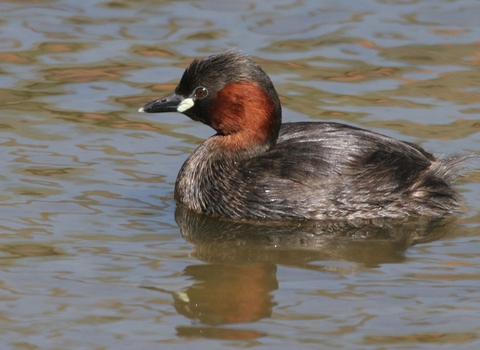
©Margaret Holland
Little grebe
The little grebe is a fantastic diver, but to help it swim underwater, its feet are placed towards the back of its body, making it rather clumsy on land. It only really comes ashore to breed.
Scientific name
Tachybaptus ruficollisWhen to see
January to DecemberSpecies information
Category
Statistics
Length: 25-29cmWingspan: 42cm
Weight: 140g
Average lifespan: 10 years
Common. Classified in the UK as Green under the Birds of Conservation Concern 5: the Red List for Birds (2021).
About
Grebes are diving waterbirds, feeding on small fish and aquatic invertebrates. The little grebe or 'dabchick', as it is sometimes known, is our smallest grebe, about half the size of a moorhen. Grebes nest on floating platforms made up of waterweed.How to identify
The little grebe is a small, brown grebe, with a fluffy, round-looking bottom. It develops a bright chestnut throat and cheeks during the breeding season. It can be a noisy bird, making a distinctive whinnying trill.Distribution
Found on canals, ponds, lakes and rivers throughout the country.Did you know?
When little grebe chicks are young, the parents will sometimes carry them on their backs.Watch
Little Grebe (https://vimeo.com/447456711)
Little Grebe by Tom Hibbert
